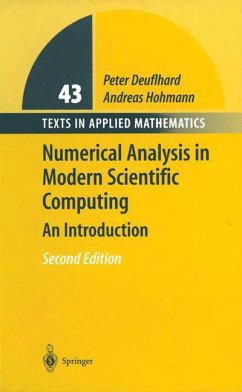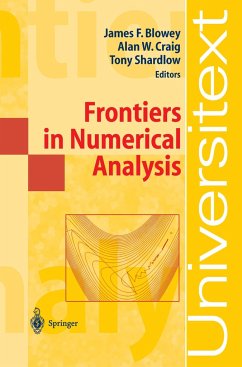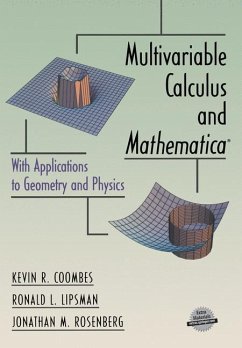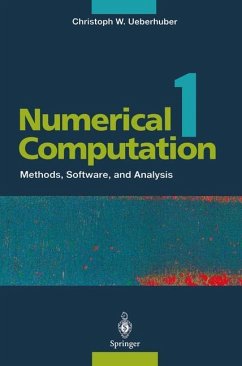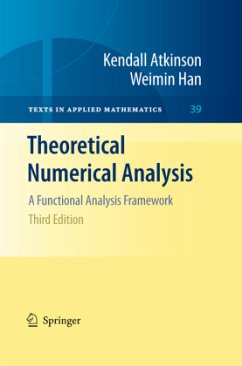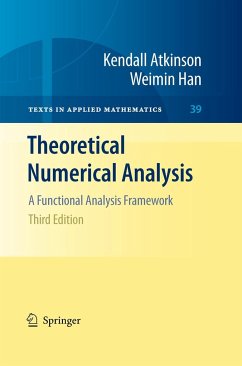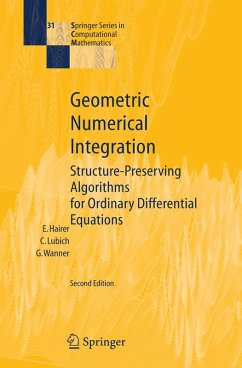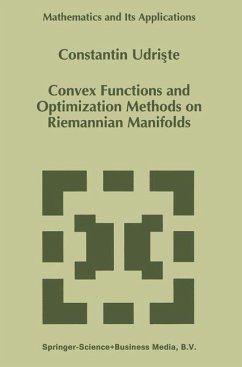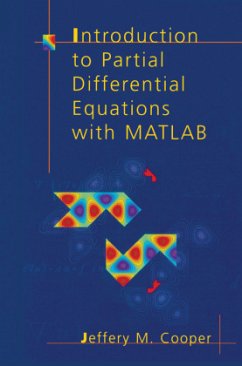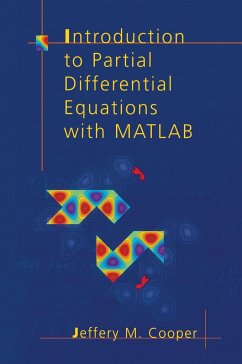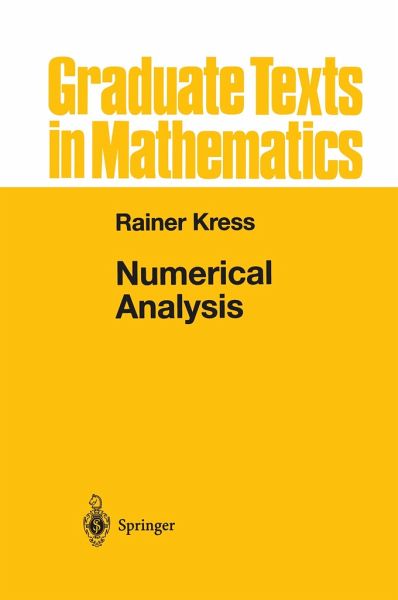
Numerical Analysis
Versandkostenfrei!
Versandfertig in 1-2 Wochen
60,99 €
inkl. MwSt.
Weitere Ausgaben:

PAYBACK Punkte
30 °P sammeln!
This volume is intended as an introduction into numerical analysis for students in mathematics, physics, and engineering. Instead of attempting to exhaustively cover all parts of numerical analysis, the goal is to guide the reader towards the basic ideas and general principles by way of considering main and important numerical methods. Given the rapid development of numerical algorithms, a reasonable introduction to numerical analysis has to confine itself to presenting a solid foundation by restricting the presentation to the basic principles and procedures. The book includes the necessary basic functional analytic tools for the solid mathematical foundation of numerical analysis. These are indispensable for any deeper study and understanding of numerical methods, in particular, for differential equations and integral equations. Particular emphasis will be given to the question of stability--especially to well-posedness and ill-posedness. The text is presented in a concise and easily understandable fashion and can be successfully mastered in a one-year course.
No applied mathematician can be properly trained without some basic un derstanding ofnumerical methods, Le., numerical analysis. And no scientist and engineer should be using a package program for numerical computa tions without understanding the program's purpose and its limitations. This book is an attempt to provide some of the required knowledge and understanding. It is written in a spirit that considers numerical analysis not merely as a tool for solving applied problems but also as a challenging and rewarding part of mathematics. The main goal is to provide insight into numerical analysis rather than merely to provide numerical recipes. The book evolved from the courses on numerical analysis I have taught since 1971 at the University ofGottingen and may be viewed as a successor of an earlier version jointly written with Bruno Brosowski [10] in 1974. It aims at presenting the basic ideas of numerical analysis in a style as concise as possible. Its volume is scaled to a one-yearcourse, i.e., a two-semester course, addressing second-yearstudents at a German university or advanced undergraduate or first-year graduate students at an American university.





